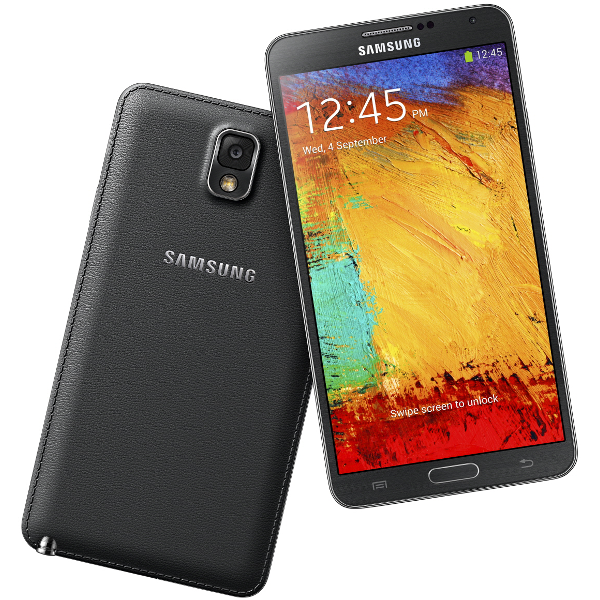Oppo N1 Review: Future-Looking Phablet Or Oversized Flop?
Oppo's N1 sports a unique pivoting camera, a large-format display, and two different operating system options. Are those features enough to make up for an older hardware platform and dicey software optimization in a sea of compelling competition?
Why you can trust Tom's Hardware
How We Tested Oppo's N1 Phablet
Benchmark Suite
Our current Android test lineup is comprised of six key sections: CPU, GPU, GPGPU, Web, Display, and Battery.
| CPU | AnTuTu X, Basemark OS II Full, Geekbench 3 Pro, MobileXPRT 2013 |
|---|---|
| GPU | 3DMark, Basemark X 1.1 Full, GFXBench 3.0 Corporate |
| GPGPU | CompuBenchRS |
| Web | Browsermark 2.0, JSBench, Peacekeeper 2.0, WebXPRT 2013 |
| Display | Brightness (Min/Max), Black Level, Contrast Ratio, Gamma, Color Temperature, Color Gamut Volume (sRGB/AdobeRGB) |
| Battery | Basemark OS II Full, BatteryXPRT 2014, GFXBench 3.0 Corporate |
Test Methodology
All handsets are benchmarked on a fully-updated copy of the device’s stock software. The table below lists other common device settings that we standardize to before testing.
| Bluetooth | Off |
|---|---|
| Brightness | 200 nits |
| Cellular | SIM Removed |
| Display Mode | Device Default (non-adaptive) |
| Location Services | Off |
| Power | Battery |
| Sleep | Never (or longest possible interval) |
| Volume | Muted |
| Wi-Fi | On |
Comparison System Specs
The table below contains all the pertinent technical specifications for today’s comparison units:
The Samsung Galaxy Note 3 is joining us today to represent the N1's main competitor in the phablet market. And as usual, the iPhone 5s, Nexus 5, Meizu MX3, and Xiaomi Mi3 are in attendance to represent the latest SoCs from Apple, Qualcomm, Samsung, and Nvidia (respectively).
Get Tom's Hardware's best news and in-depth reviews, straight to your inbox.
Current page: How We Tested Oppo's N1 Phablet
Prev Page CyanogenMod Software Tour Next Page Results: CPU Core Benchmarks-
wavetrex Just a small comment about OLED, even if this might not be the place to write about it.Reply
Probably due to to imperfections in the transistors that control the OLED pixels, there is a very faint but perceptible in deep darkness leakage of energy toward the pixels.
Yes, doesn't compare to the obvious light bleed of any TFT display, but the OLED "off" pixels are not truly off, they have a 0.00something-small level of light which could theoretically be measured by some very sensitive equipment.
The eyes are certainly capable of seeing it... -
InvalidError Putting both flash LEDs on the same side so close to the image sensor seems like a missed opportunity to me: putting one LED close to each hinge with the camera in the middle would provide more even lighting and softer shadows.Reply
With the mostly passable image quality, that would not help the N1 much though. -
Onus Please don't put the letters "p" "h" "a" "b" "l" "e" "t" together in that order and treat it like a word.Reply
-
WyomingKnott @onusReply
First time I read the term I had the image of holding my 10" Asus pad up to my face and talking into it. I suppose it's better than a shoe; cleaner, too. -
shahbaz200 Bad GPU, doesn't works well on this device, poor performance, other than that its good device.Reply -
BlankInsanity please respect my opinion, but I don't see why phones need to go bigger. i the 90s phones used to be huge and this was a problem for mobility and so as the years went by they created smaller form factor phones. Now here we are repeating that mistake. A phone is ment to make a small footprint when hidden on it's user such as a pocket. You don't put your tablet in your pocket, I don't see why'd you make a phone out of it. this is just my opinionReply -
jankeke "please respect my opinion, but I don't see why phones need to go bigger. i the 90s phones used to be huge and this was a problem for mobility and so as the years went by they created smaller form factor phones. Now here we are repeating that mistake. A phone is ment to make a small footprint when hidden on it's user such as a pocket. You don't put your tablet in your pocket, I don't see why'd you make a phone out of it. this is just my opinion "Reply
True but people couldn't watch porn on their phones back then so it made sense to make them as small as possible. Not so now ... ^^ -
Matthew DiGiacomo No offense Tom's Hardware but why are you reviewing this phone now? It's outdated and been on the market for almost 8 months.. No one really cares about it anymore.Reply -
falchard The Camera is a smart solution meaning you won't need 2 cameras. Obviously it will need tilt support to tell it which direction is up.Reply
No removable battery is a shitty solution. Its the issue all phones face after 2 years, their batteries no longer hold a charge. -
BlankInsanity Reply13717317 said:The Camera is a smart solution meaning you won't need 2 cameras. Obviously it will need tilt support to tell it which direction is up.
No removable battery is a shitty solution. Its the issue all phones face after 2 years, their batteries no longer hold a charge.
lol that's a scam the companies do to force you to buy a new one ;)


